Is There Actually A Best Time To Water Plants? Here’s What The Science Reveals


Elizabeth is a Permaculture Garden Designer, Sustainability Consultant and Professional Writer, working as an advocate for positive change. She graduated from the University of St. Andrews with an MA in English and Philosophy and obtained a Diploma in Applied Permaculture Design from the Permaculture Association.
Reviewed By DAN ORI

Dan has over 27 years’ under his belt caring for plants and gardens. Working as a Horticultural Instructor and Consultant, he draws on a diverse range of experience that includes working as a Head Gardener, Tree Surgeon, Garden Centre Trouble Shooter, and writer of academic papers. Dan has a Level 3 Diploma in Horticulture and is currently a candidate for the RHS’s most prestigious award – The Master of Horticulture.
Contributions From GERALD STRATFORD

Gerald Stratford has been growing his own veg since the age of 4. He is the author of ‘Big Veg’ and is hailed as ‘The King Of Veg’ by his audience - with almost 500,000 keen followers across his various social accounts.

Isabelle Palmer, AKA 'The Balcony Gardener', is an award-winning garden designer who specialises in container growing and designing in small spaces. She has designed spaces for Anthropologie and appeared on numerous TV shows such as Love Your Garden. She has also published multiple books on balcony gardening, houseplants and succulents.
Water is one of the most important things in a garden and you may have many questions about how to manage it effectively to water your plants.
If you’re wondering when is the best time to water plants – read on.
Understanding when and how to water plants is perhaps one of the biggest challenges in gardening.
You might also be wondering how long you should wait between waterings or how to tell whether it is time to water a particular plant once more.
We have answers to each of those questions below.
Watering By Time Of Day
Watering in the early morning is generally the best policy.
It is best to water as soon as possible after the sun rises as this is when the plants begin to photosynthesise and draw in water and nutrients from the soil through their roots.1Water Transport and Transpiration. (n.d.). The Science Hive. Retrieved March 22, 2023, from https://www.thesciencehive.co.uk/water-transport-and-transpiration-a-level
The water travels up through the stems of the plant and into leaves, where it is released in a process known as transpiration from tiny pores, called stomata.2McElrone, A., Choat, B., Gambetta, G., & Brodersen, C. (2013). Water Uptake and Transport in Vascular Plants. The Nature Education Knowledge Project. Retrieved March 22, 2023, from https://www.nature.com/scitable/knowledge/library/water-uptake-and-transport-in-vascular-plants-103016037/
Over the course of the day, sunlight will also cause evaporation from the soil surface.
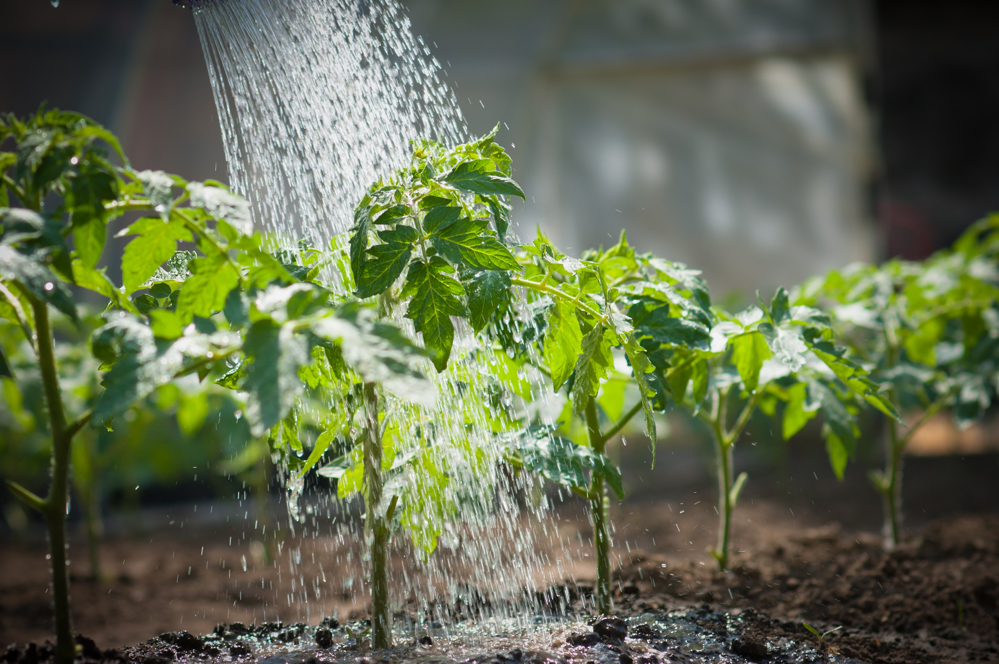
More water will be lost to evaporation if you water during the warmest and brightest part of the day, so it is best to avoid watering during the late morning and early afternoon if possible.
“Exceptions to this would be watering in spring when you are waiting for temperatures to get above 8°C to avoid cold damage,” shares Horticultural Consultant Dan Ori.
“This could mean you are watering late morning. Also, winter water will require a different approach due to cold temperatures and you may wish to water during the warmest part of the day.”
If you cannot water first thing in the morning, then the next best option is to water in the evening, when cooler conditions mean that less water is lost to evaporation than it would be earlier in the day.
However, here in the UK, it is generally better to aim for early morning watering if you can, because when you water early in the morning this gives the foliage and soil surface a chance to dry out during the day which can reduce the chances of issues with pests and fungal diseases.
While morning watering is optimal, this does not mean that you cannot get away with watering at other times.
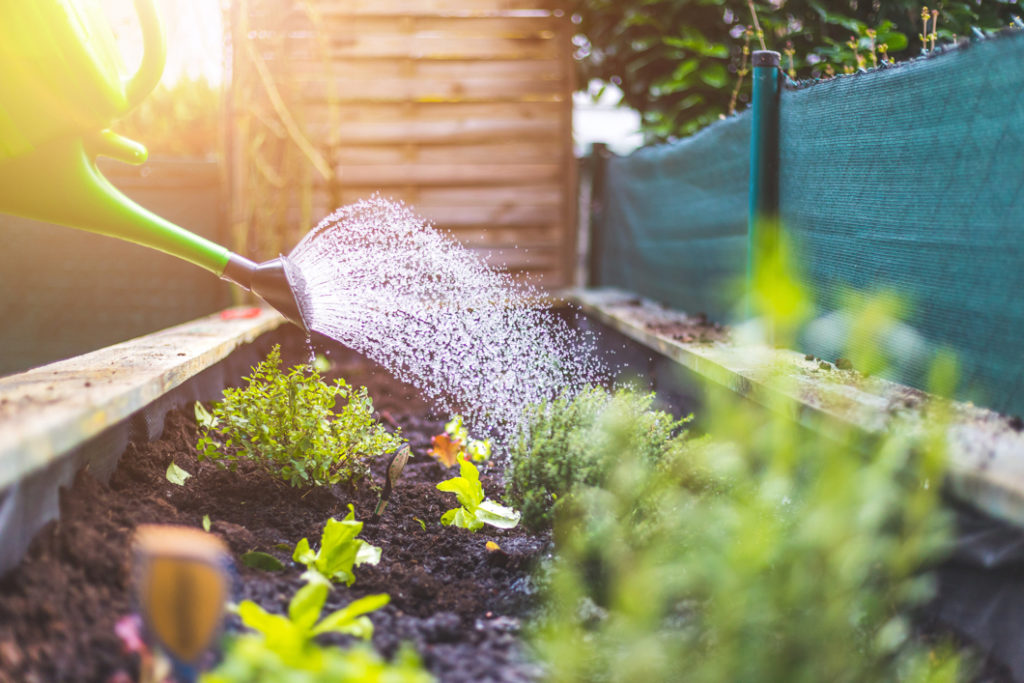
During particularly hot and dry periods, certain plants may need to be watered more than once a day – in the morning and in the evening.
You may also need to water during the day to increase humidity in an undercover growing area for specific plants.
“Never water in full sun, that’s a definite no-go,” says Gerald Stratford, Gardener and Blogger.
“You can do a lot of damage to your plants when the sun is out.
“If you use a hosepipe and it’s been sunny, run the water into a bucket for about a minute. Water in a hosepipe with the sun on it can get to almost boiling point and you could kill your plants.”
As with most general rules in gardening, there are exceptions, but trying to get into the habit of watering first thing is generally a good idea if possible.
Watering Frequency
One answer to the question of when it is the best time to water plants is simply when they need it, but understanding when plants need to be watered is not always an easy thing.
Unfortunately, there is no shortcut or simple answer about how often we need to water our plants to give them sufficient water for their needs.
Each plant has different needs depending on its environmental conditions.
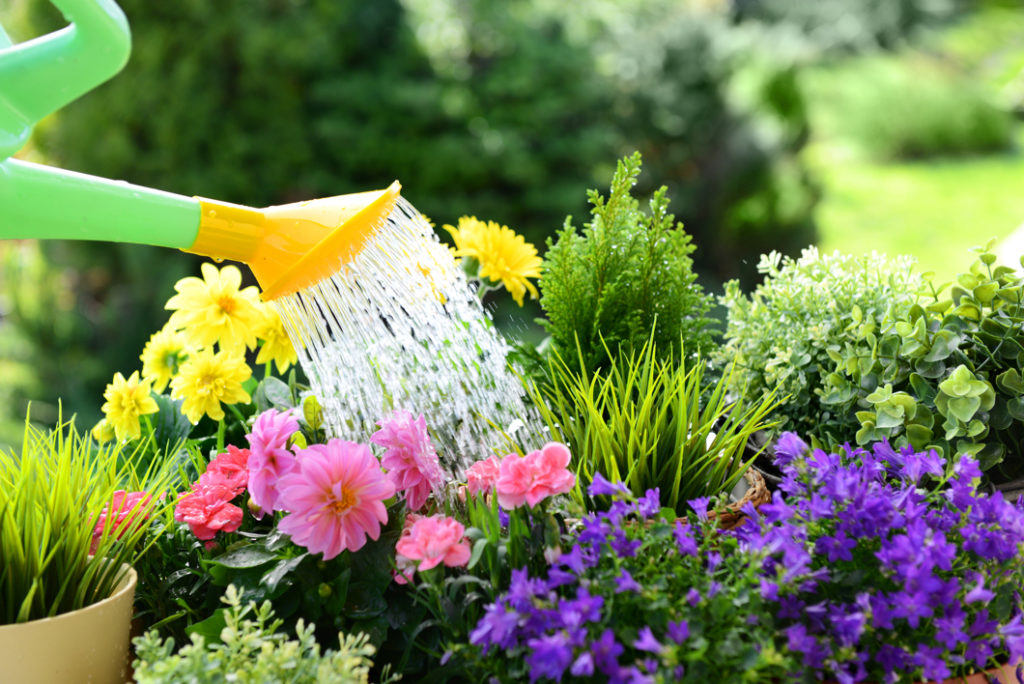
How frequently you need to water your plants will depend on:
- The location, its climate and micro-climate conditions.
- The season, the weather and the temperatures.
- The species, size and age of the plant in question.
- Where the plant is growing (in sunshine or shade, in a container or in the ground, etc).
- The soil or growing medium; its type and characteristics.
“If you’re using a big pot, which is a great idea, I would always make sure that the water gets to the top, as the roots of young plants will be at the top of the container,” shares Garden Designer Isabelle Palmer.
“Using an irrigating system is a really environmental and economical way to water your plants.”
Tips To Determine When To Water
Keeping The Soil Moist
In general, you should try to think of water in the soil or growing medium as a ‘glass half full’.
Ideally, you want to keep the soil moist but avoid waterlogging.
Moist yet relatively free-draining conditions are ideal for many of the plants you will grow in your garden, though obviously some like drier or wetter conditions.
Plants will usually use water where it is available, but they may not be as strong.
Weather
Plants typically need more water in hot, summer weather and less water in cool temperatures and over the winter months.
Rainfall, sunshine hours, temperatures, wind and humidity all affect how much water will be lost and how much plants will require.
Leafy Plants
The more leaves a plant has and the larger it is, the more water it is likely to require.
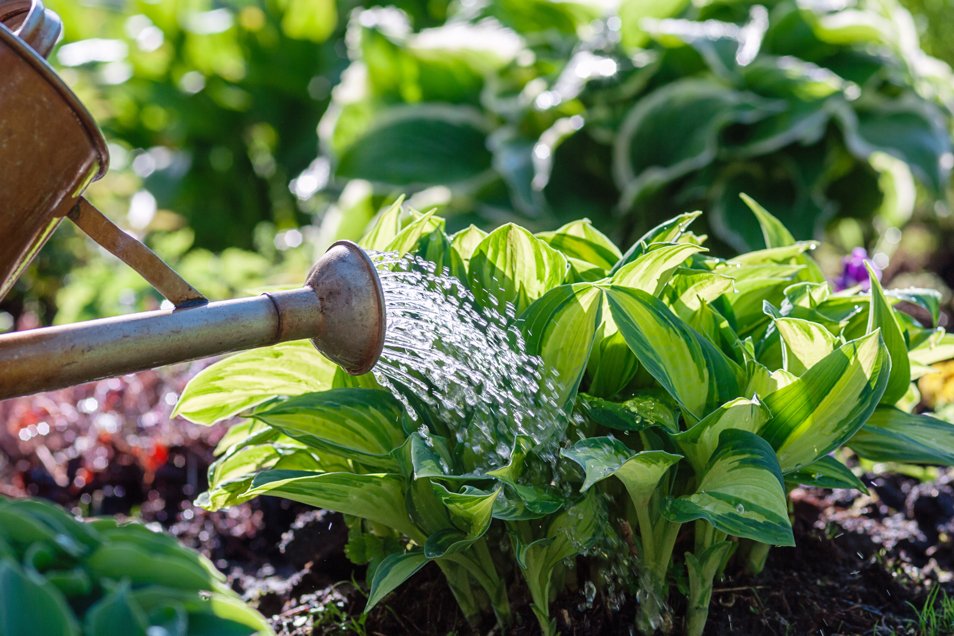
Larger, abundantly-leaved plants lose more water, and larger plants need more nutrients (taken up in water through the roots) to flower and set fruit.
Roots
Plants with wide-ranging roots which can spread out will typically require less additional watering since the roots will be able to range to pick up water in a larger area of soil.
Plants growing in restricted spaces or in containers will not be able to spread out their roots in search of water and so will require more watering.
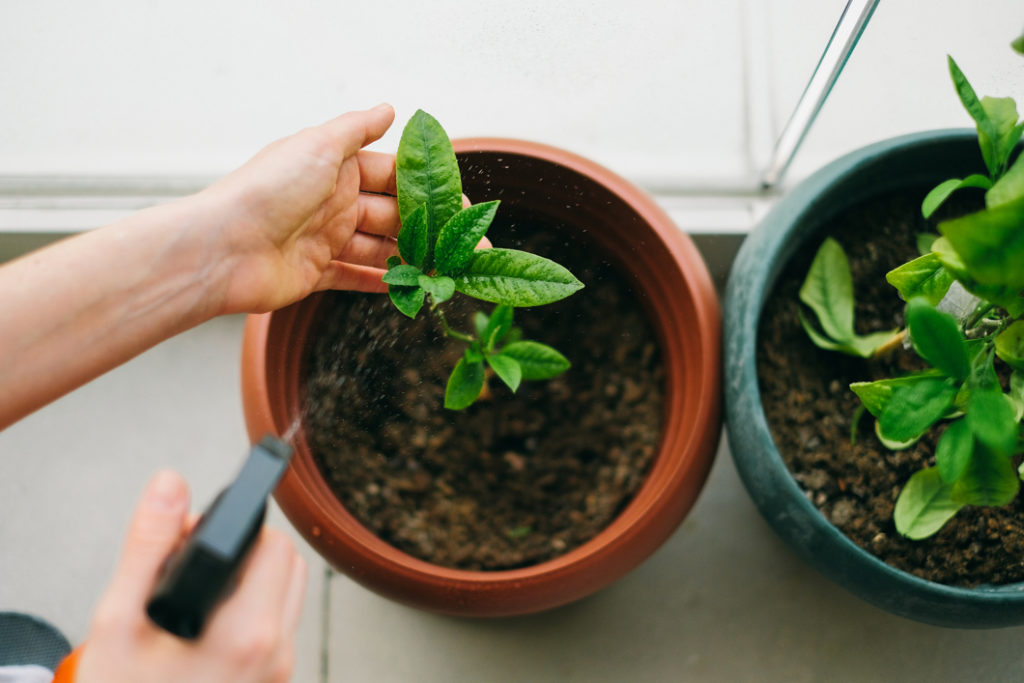
The smaller the container, the more quickly it will tend to dry out.
Spring-sown annual crops and flowers are likely to need more water than self-sown or autumn-sown plants since they have young and relatively shallow root systems.
Young Plants
Any newly sown or newly planted areas are more vulnerable to water stress since root systems are not yet fully established.
Soil
Clay soils will hold more water than light sandy soils, but plants will find it more difficult to extract water from them.
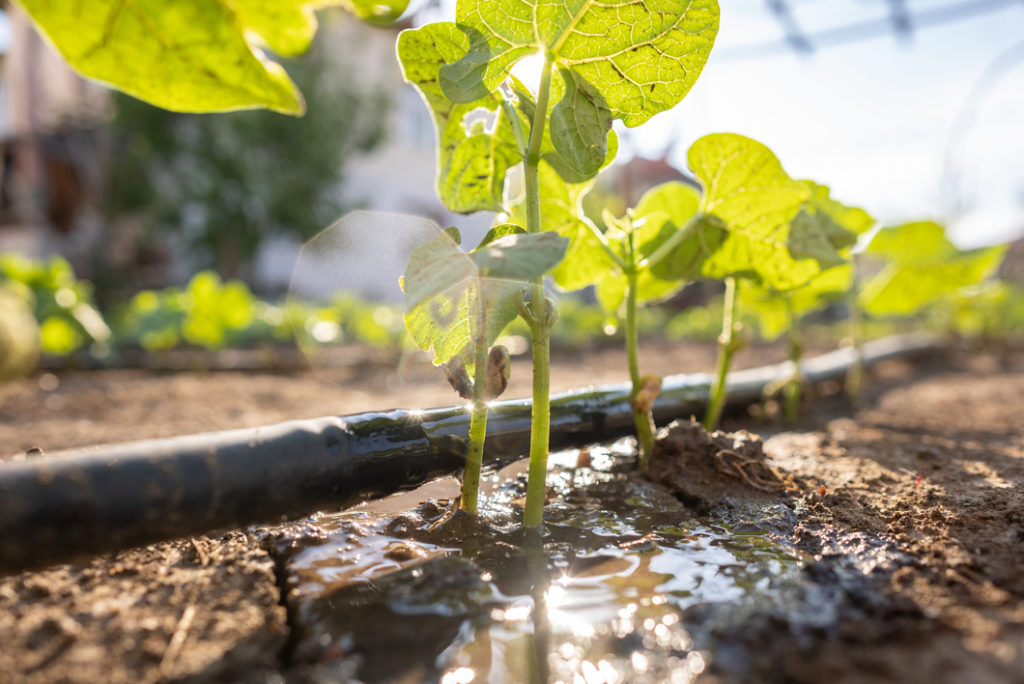
Sandy soils need smaller but more frequent waterings than clay ones.
Soils with higher levels of organic matter will hold more water for longer.
When More Frequent Watering Is Required
Some gardeners imagine that plants need watering when the surface of the soil is dry to the touch, but the surface does not always give a good indication of what lies below.
Even when surface moisture is low, there may still be plenty of moisture around root tips, where it is required.
The touch test can be useful, but you need to insert a finger into the soil, at least to knuckle depth, to see if it is moist.
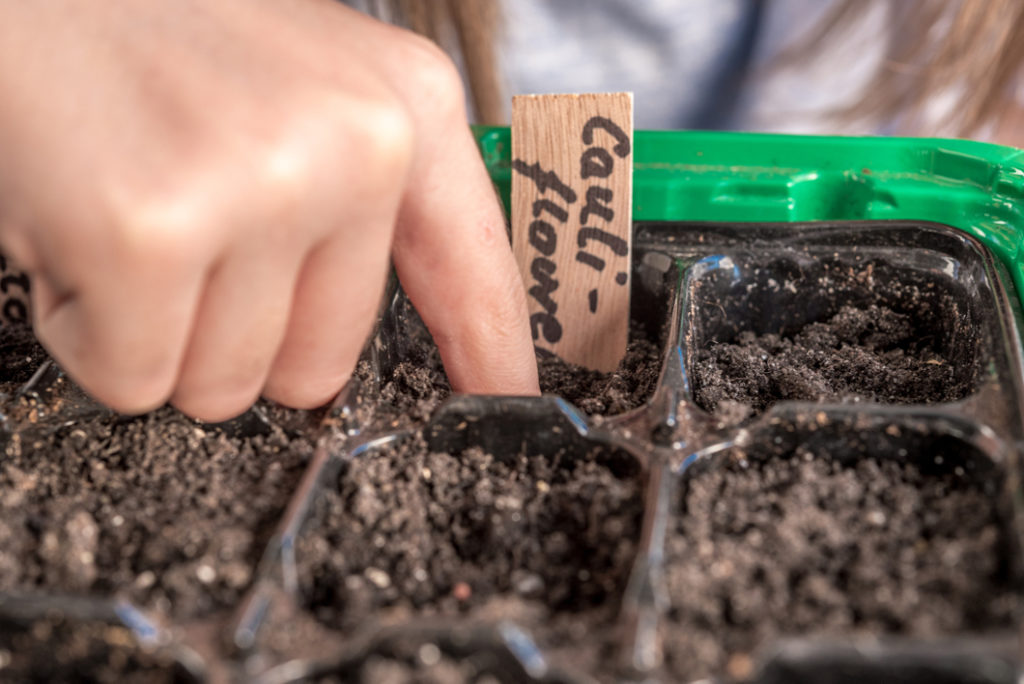
Your plants may also be showing signs that they need more water, such as:
- Poor foliage growth, or poor flowering or fruit production.
- Dull and lacklustre stems or leaves which may be darker or paler than usual.
- Downward tilting or curling leaves.
- Wilting or browning of the leaves (though note, a lack of water is not the only thing that can cause these symptoms).
- Plant diseases like powdery mildew taking hold.
If growing in pots or containers, lightweight containers which may blow over in the wind can also be a sign that not enough water has been provided.
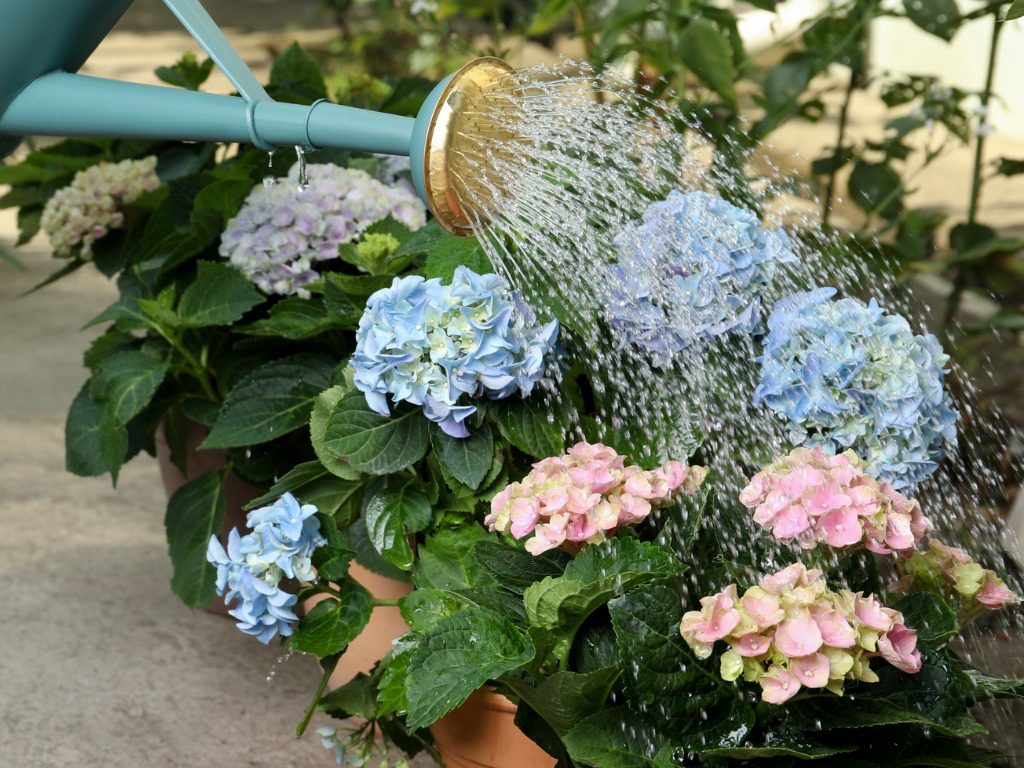
Of course, prevention is always better than cure.
Many plants that have been under-watered or which have experienced drought can be brought back into full health, but it is always better to aim to provide sufficient water and prevent symptoms of water shortage from showing up in the first place.
References
- 1Water Transport and Transpiration. (n.d.). The Science Hive. Retrieved March 22, 2023, from https://www.thesciencehive.co.uk/water-transport-and-transpiration-a-level
- 2McElrone, A., Choat, B., Gambetta, G., & Brodersen, C. (2013). Water Uptake and Transport in Vascular Plants. The Nature Education Knowledge Project. Retrieved March 22, 2023, from https://www.nature.com/scitable/knowledge/library/water-uptake-and-transport-in-vascular-plants-103016037/
